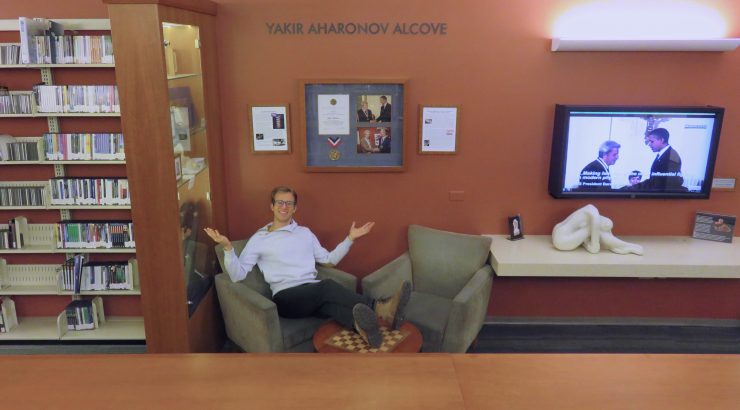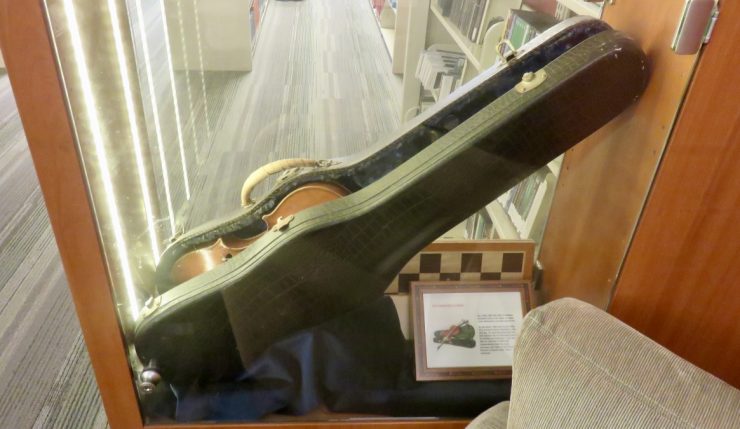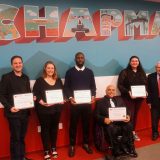Exploring the Library: Yakir Aharonov Alcove
November 1, 2019
When I was younger, I would watch every documentary I could about quantum physics, string theory, future technology, anything in the realm of experimental science. I had an obsession with it and for a short time, wanted to be a quantum physicist. While I am not currently pursuing quantum physics, the concepts of bending time and space continue to fascinate me. I am by no means equipped to have a lengthy discussion about theoretical physics but I could sit for hours and listen to someone explain theory after theory.
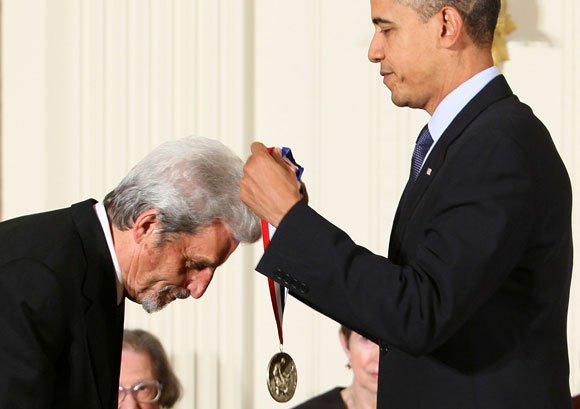
Dr. Aharonov receiving the National Medal of Science from then President Barack Obama in 2009. The medal given to Dr. Aharonov is displayed in the alcove.
One man who has made an incalculable impact on physics with his theories and experiments is Dr. Yakir Aharonov, a professor of theoretical physics at Chapman, who is honored in the Dr. Yakir Aharonov Alcove on the third floor of the Leatherby Libraries, in the Onnolee Elliott Library of Science and Technology. Dr. Aharonov has received many accolades, including the prestigious Wolf Prize in 1998 and the 2009 President’s National Medal of Science “for his contributions to the foundations of quantum physics and for drawing out unexpected implications of that field ranging from the Aharonov-Bohm effect to the theory of weak measurement.”
Dr. Aharonov’s biggest contribution to science has been the Aharonov-Bohm Effect that he discovered with the late David Bohm, in 1959. This quantum effect revolutionized our understanding of potentials in physics. This effect goes hand in hand with quantum mechanics. It offers the possibility that two completely 100% identical particles sitting in the same physical location with the same forces exerted on them can react differently at the same time. These completely different behaviors occur for no apparent reason whatsoever.
Aharonov’s entire career has been about pushing the limits of physics and asking the questions that no one dared ask before him. What fascinates me most about this man is how he became the scientist he is today. When he was a child, he would compose music in his head. At age eleven, he took to learning the violin. While playing the violin, he discovered that the best acoustics were in the kitchen and bathroom. After reading how Einstein made the same discovery as a child, Aharonov decided to become a physicist instead of a music composer. On display, the library has Aharonov’s childhood violin, the same one he would play in the kitchen and bathroom.
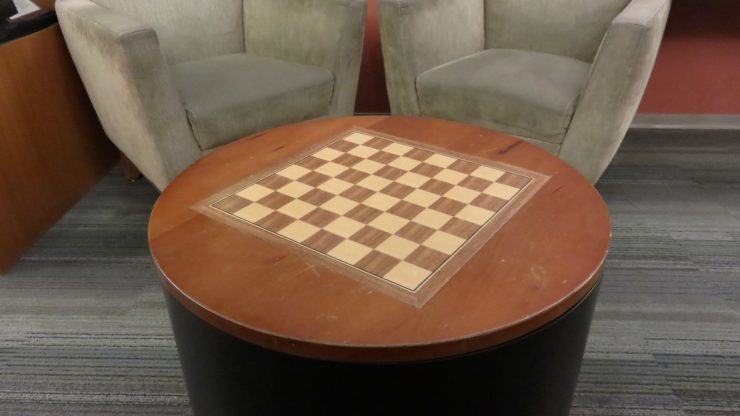
Aharonov loves chess so when the library was creating the alcove in his honor, they made a table with his own chess board as the top.
In his 2009 “Aims of Education” speech at Chapman, Aharonov said “When you progress academically (and in life in general), never give up your enthusiasm and your curiosity. Rather, keep maturing and developing it. It is the key to your originality and to your success and, I believe, much of your happiness…the deeper the sense of puzzlement or mystery, the higher will be the peaks of enjoyment in the solution. As a byproduct, you too will learn much more. This is the essence of active learning.”
With those words in mind, I hope you leave this post feeling some sense of inspiration from Yakir Aharonov. Time and time again, he has challenged our preconceived ideas of time and space. Question the norm. Push the boundaries. Be more like Yakir Aharonov.
